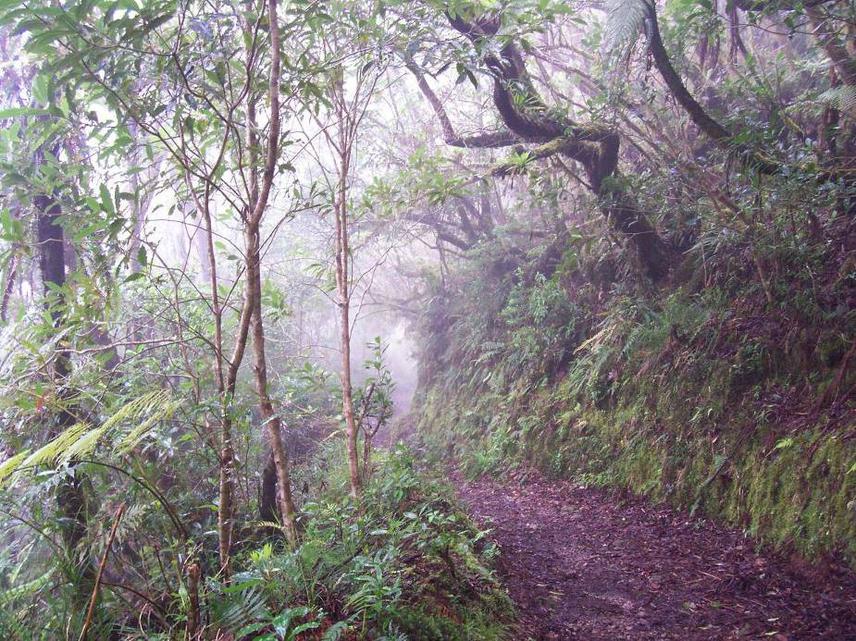Shauna-Lee Chai
This project aims to begin a process of rehabilitation for priority sites in the Blue and John Crow Mountains National Park.

The montane rainforest along the Blue Mountain Peak Trail.
The proposed conservation measure follows on from recommendations by various experts who have worked on the issue of alien plant invasion in the area. The priority area chosen as a pilot is the famous Blue Mountain Peak area, where alien invasive species such as Pittosporum undulatum (wild coffee), Hedychium gardnerianum (wild ginger) and Polygonum chinense (red bush) have become established in degraded areas of the tropical montane rainforest ecosystem. It is hoped that through control of these invasives, and replanting with native fast growing species, the natural process of regeneration will be initiated, thereby bringing these forests closer to their natural state.
The Blue Mountains are known for their rich floristic diversity, with over 500 species of flowering plants (with about 40% of the higher plants being endemic) described from the area. Due to the variety of unique ecosystems present, the Blue Mountains are a part of Jamaica’s only National Park – the Blue and John Crow Mountains National Park.
The area chosen for rehabilitation is adjacent to the world renowned Blue Mountain Peak Trail that runs through a tropical rainforest and leads to a 2256 m peak with breath-taking vistas. The area chosen will also allow the conservation work to be clearly visible to the public from the trail, thereby presenting a good opportunity for public education.
A strong linear negative correlation has been found between the dominance of P. undulatum and the density and diversity of native tree seedlings. This relationship is so clear and consistent that it strongly suggests that P. undulatum is causing or at least contributing to a decline in the native seedling layer.
By pursuing this pilot rehabilitation effort, a substantial and long lasting contribution to biodiversity conservation will be made as Park management will begin a practical conservation programme that will mitigate the threat of alien invasive plants on biodiversity. Research has shown that controlling these invasives is feasible and should be pursued.
The project also hopes to provide employment for a group of interested people from nearby communities, thereby creating employment and interest in nature conservation for some of the people who live closest to the forests.